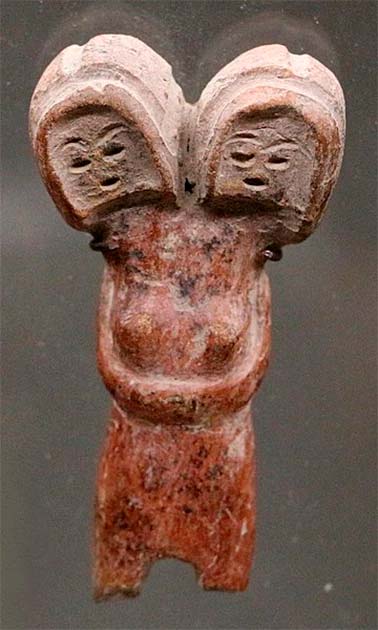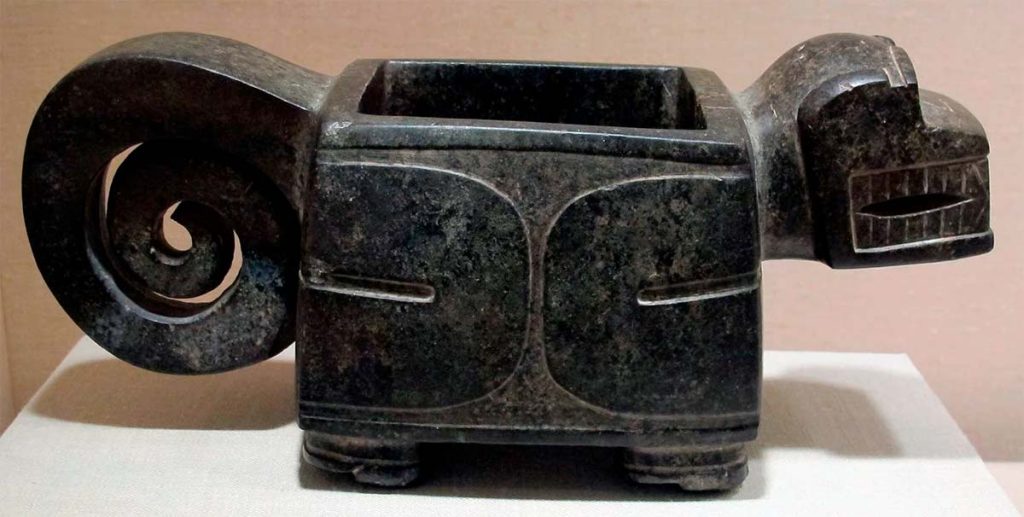The Valdivia culture of Ecuador in South America is one of the oldest settled cultures found in the Americas. It has been said that it emerged from an earlier Las Vegas culture found in the same area years before them.
The Valdivia culture thrived on the peninsula of Santa Elena near the modern-day town of Valdivia. It has been dated to around 3,500 BC to 1,500 BC. They are claimed to have created the earliest representational images that have been found in the Americas to date. But who were they and what was their culture?
Prehispanic Period
The site that Valdivia finds itself on today may have been inhabited since around 12,000 BC according to discoveries that archaeologists have made in Monte Verde, 200km (124 miles) from Valdivia. In a timeline, this would place these peoples before the Clovis culture found in North America, a truly ancient people.
These discoveries forced archaeologists to rethink the models of migration to the New World. It is possible that the first inhabitants of Chile and Valdivia traveled to America via watercraft and not through the far north land bridge known as the Bering Strait.
By the time the Spanish arrived in the 16th century AD, the area known as Valdivia was inhabited by the Huilliches. The Spanish referred to these people as Araucanos. In the present-day downtown area of Valdivia, there was a large village called Ainil. The river nearby was referred to as Ainilebu.
Archaeologists suspect that this was the original for the Valdivia River. Ainil seems to have been an important trading town that had great access to the sea and a viable transport network inland using the river system.

Some historians have referred to Ainil as a little Venice. It would have had large areas of canals and wetlands, although these are mostly are drained or filled today. The village would have received shellfish and fish from the coast, beans and pulses from the nearby Punucapa hamlet, and other foods from an agricultural area to the Northeast called San Jose de la Mariquina.
- (In Pics) Ten Great Lost Civilizations of Peru that aren’t the Inca
- Shrunken Heads: Torture, Magic, Or Grisly Souvenir?
There are still remains of the ancient riverside trade route along the river. The surroundings of Valdivia have been described as large plains that housed a significant population all of which harvested maize, potatoes, quinoa, and other legumes.
However, these descriptions come from the conquistadors of the Spanish, documenting the area from 1548. It has been estimated from their descriptions that the population of this area was around 30-40 thousand.
However, this number has been questioned due to the fact that the Spanish would usually inflate and exaggerate their numbers. A few hundred years later Charles Darwin would dismissively say that there is not much-cleared land near Valdivia: whatever culture had been here had largely been lost.
The Culture of Valdivia
The Valdivia culture is one of the earliest recorded cultures of the Americas. Remains of it were discovered in the 1950s on the western coast of Ecuador by the archaeologist Emilio Estrada. He was later joined by archaeologists Betty Meggers and Clifford Evans studying the type of site.
They discovered that the Valdivia lived in a community that built circle or oval homes centered on a plaza. The society looks to have been a relatively sedentary people of an egalitarian nature. They likely lived mostly off of hunting and fishing. Archaeological remains have revealed that they also cultivated squash, cassava, chili, and maize. Cotton was used by them to make clothes through weaving and spinning.
Valdivian pottery has also been found and dated to circa 2,700 BC. Though initial finds suggested that the pottery was practical and rough. However, this soon developed into more delicate, large, and splendid pieces.
Generally, the pieces were made using red and grey colors. Much of the pottery was polished dark red which is a characteristic of the Valdivian period. There is a clear sign of progression from simple to much more complicated works.
The Venus of Valdivia
Valdivian culture has often been characterized by its trademark pieces known as the Venuses of Valdivia. These were feminine ceramic figures. It has been speculated that the Venuses likely represented actual people. The figures are mostly individual and unique, with individuality expressed through the hairstyles.
Many of the figures were made by joining two rolls of clay. The lower portion was separated as legs whilst the body and head were made from the top portion of clay. The arms of these figurines were typically very small and were bent towards the chest, under the chin, or holding the breasts.

Most of the ceramic figurines were female and usually came with voluptuous bodies and prominent breasts. Some statues however came with male and female characteristics, combining female breasts and proportions with male genitals. These figurines were approximately between 3 and 5 inches (7.5 to 12.52 cm) high but come in a variety of forms.
The eyes and face were often represented by lines cut into the clay whilst the nose was represented by a mark across the face. Despite their initial simple design, the facial expressions are quite vivid. The makers clearly took time in designing their faces. The design of the hair also showed careful craftsmanship, always displayed flowing down the back of the figurine.
The figures have been found in a variety of contexts as well. Figures have been found in burials but also refuse piles from house floors. Many were found in hearths and in food preparation areas. It is because of this that they have been associated with women. Based on the features that these figurines have, they have been interpreted as fertility figures. However, this is just speculation.
The Valdivia pottery was long thought to be the oldest pottery produced in South America. In the 1960s, a team of researchers claimed that there were similarities between the ceramic figures of Japan and Valdivia.
However, this theory was challenged even at the time due to the logistical challenges that this theory posed. The traders would have had to have traveled around 15,000km (9,300 miles) in canoes which is highly unlikely. There is no sign of what happened to the Valdivian culture, but it can still be seen through its fragments of pottery.
Top Image: The Valdivia figurines display both male and female sexual characteristics. Source: Freddy Eduardo / CC BY-SA 4.0.
By Kurt Readman